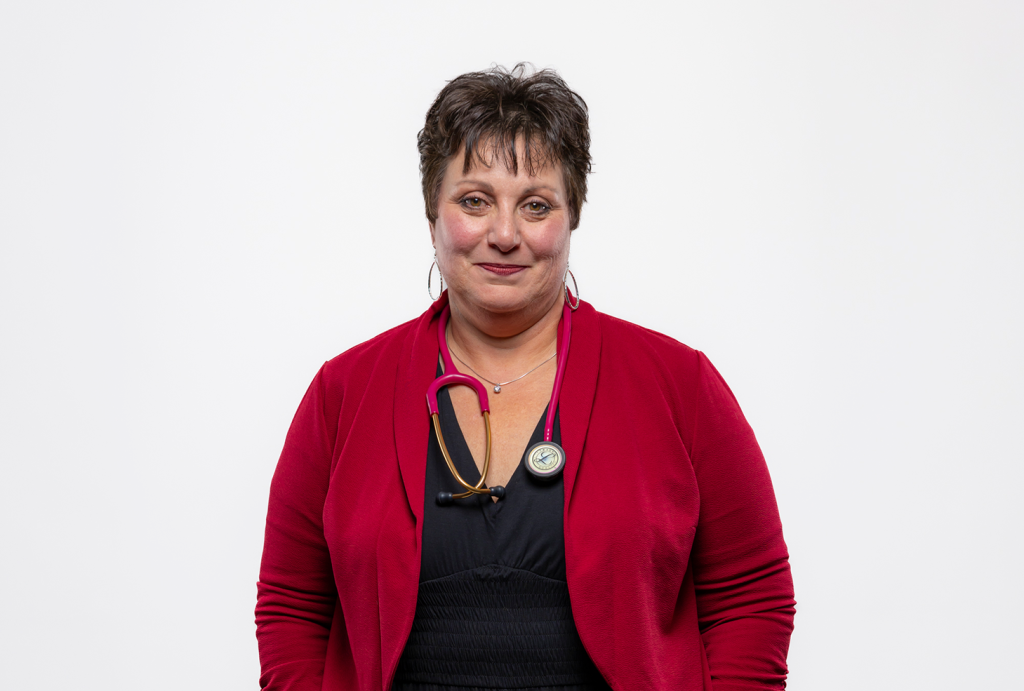Nurturing Compassionate Care
Preparing nursing students to deliver culturally aware and patient-centered health care

Assistant Professor of Nursing Jeanmarie Koonts
“Too often we underestimate the power of a touch, a smile, a kind word, a listening ear, an honest accomplishment, or the smallest act of caring, all of which have the potential to turn a life around.”
This quote from Leo Buscaglia perfectly reflects the impact nurses have on their patients — and the influence I aim to have on my students. With more than 35 years of nursing experience and extensive expertise as a nationally certified nurse educator, I guide the next generation of nursing students by integrating this philosophy into my teaching. With Elon University’s commitment to engaged learning and critical thinking, I continually ask: “What does excellent nursing care look like, and how can I teach students to deliver it?”
Excellent nursing care traditionally focuses on safety, compassion and patient-centered practices. But in today’s diverse society, care must also account for the differences in appearance, beliefs and practices that shape a patient’s identity. Social determinants of health, culture and spirituality all play vital roles in patient outcomes. My teaching emphasizes dialogue and bridge-building to help students develop intercultural competence and faith/spirituality literacy.
I believe excellent nursing care is holistic, compassionate and evidence-based. It requires cultural and spiritual awareness and the ability to view care through the patient’s eyes.
In fall 2022, I designed an interactive puzzle project to address these factors. Students start with a blank puzzle shaped like a human body. Each week, as they gain clinical skills by studying body systems and practicing assessments on peers and mannequins, they also explore factors influencing patient care like culture, diet, dress, rituals and faith practices. For example, we discuss how a Sikh patient’s head covering reflects their belief in modesty, why a Muslim patient may require a pork-free diet and which patient population might be more likely to refuse blood products.
The project culminates with students decorating their puzzles to reflect their own identities and presenting them to the class. This activity fosters empathy, helping students understand their peers’ experiences while reinforcing the importance of holistic patient care. As one student noted, “I knew I was learning about patients, but I didn’t realize how much I learned about my fellow nursing students in doing this activity.”
Beyond the classroom, my Bridging Faith and Health multidisciplinary initiative, which I developed with two colleagues from the Department of Religious Studies, Assistant Professor Helen Orr and Professor Brian Pennington, enriches this learning by engaging nursing, physician assistant and physical therapy students in dialogues about spirituality’s role in health care. Through case studies and discussions over the course of three weeks, students explore how to honor patients’ religious needs, such as respecting end-of-life rituals in busy hospital settings. After completing the series, participants earn a micro-credential in Faith and Health Literacy, equipping them to deliver individualized, faith-informed care.
Ultimately, I believe excellent nursing care is holistic, compassionate and evidence-based. It requires cultural and spiritual awareness and the ability to view care through the patient’s eyes. By challenging assumptions and fostering empathy, my students learn to turn these principles into actions that truly have the “potential to turn a life around.”

